Josefina stages her ideas, sometimes acting herself in them, together with her sister Catalina and different friends. Outside Buenos Aires, she gets inspired:
![]()
‘Chacra Sta Ana in San Vicente
Pedro Oliver’s ownership
Shed of the bees
Catalina Oliver,
playing the role of “china” Vicenta’ FSlta PV_002b
The “chinas”, dressed like peasants next to a cattle gate, always wear very long plaits; they play the guitar, eat watermelon or have ‘mate’ in the shed.
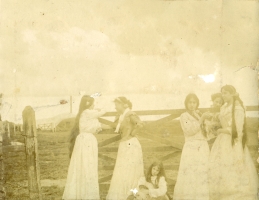
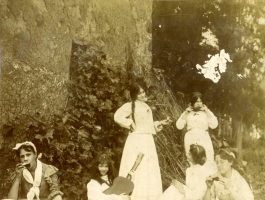
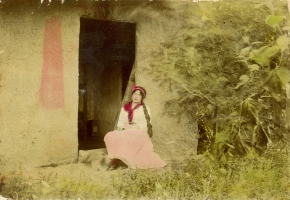
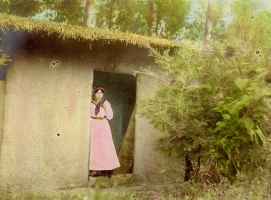
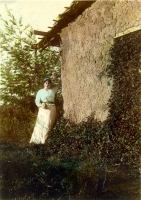
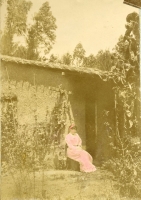
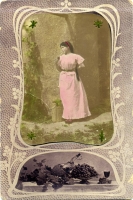
The zagalas come back happilly after working on the farm.
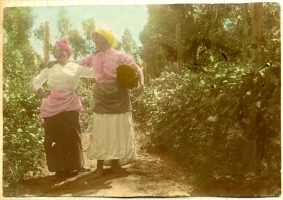
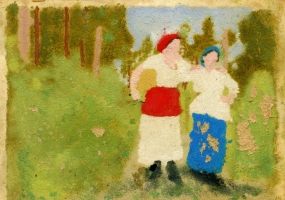
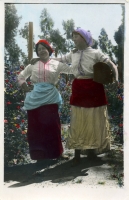
In Buenos Aires, these stagings change and incorporate into a more formal atmosphere.
Josefina feigns characters from national symbology or from classic paintings.
In this way she creates the photo in which, she embodies, through illumination (colouring), an allegory of the Argentinian flag or her homeland itself. A jewell of hers simbolises the sun in the flag.
Josefina needs to see herself as ‘an officer of the Salvation Army’. The outfit she chooses to dress up equals those worn by the organisation’s volunteers.
The Salvation Army was founded in London in 1865 by the Methodist preacher William Booth and his wife Catherine. This institution was working since 1890 in Uruguay and Argentina.
It was governed by strict rules, like the prohibition to wear jewels or superfluous elements on the uniforms, which should be blue or grey and very sober.
![]()
‘(...) Monday 24th - After lunch I took several portraits of Amelia. María and Julia Ithurrá came to visit us. They went to my room upstairs, and there I took different groups representing Amelia as a sick woman in my bed, Catalina as a maid and María and Julia Ithurrá as guests.’ Diary 2 p.246